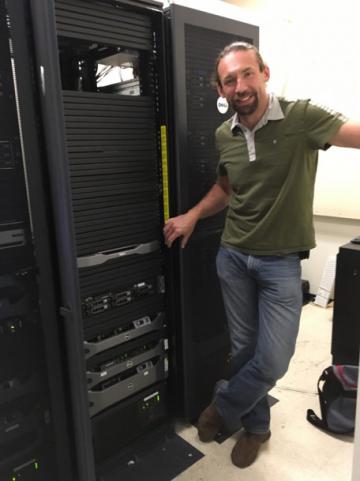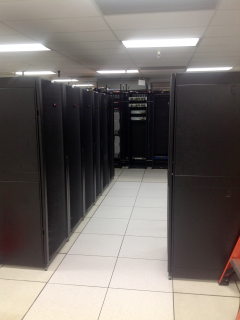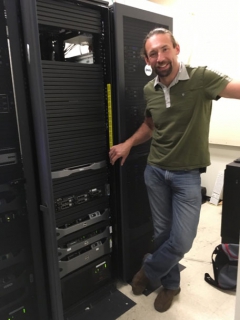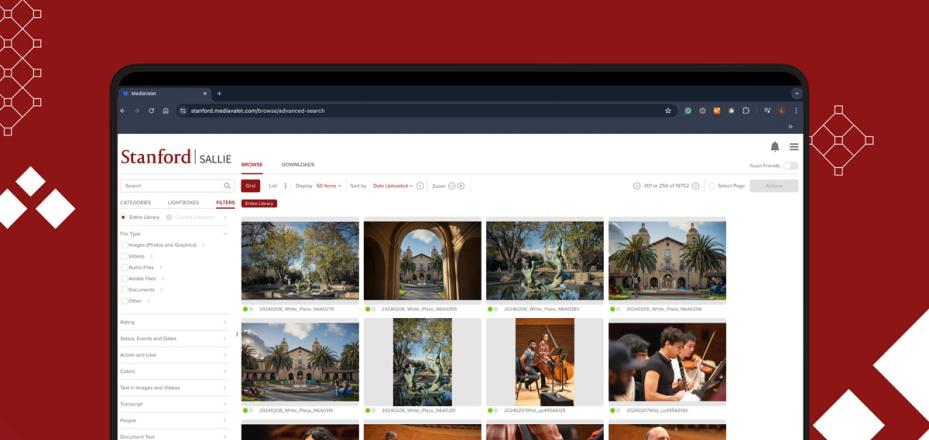Sustainable IT Initiatives Result in Energy and Cost Savings


Energy-efficient data center in Forsythe Hall enables energy reductions on server cooling, among other benefits.
As summer transitions to fall, everything starts to kick into high gear in preparation for the new academic year. That includes energy consumption associated with computing, which accounts for about 15 percent of total campus energy use.
Stanford’s Sustainable IT program helps to increase the efficiency of the campus IT infrastructure and reduce greenhouse gas emissions caused by IT-related activities. In the past year, the program has saved Stanford thousands of dollars in energy costs through various energy-efficient computing initiatives.
The Sustainable IT program is a partnership between Sustainable Stanford, University IT (UIT), Stanford Research Computing, and IT departments across campus. The program encourages server energy efficiency and power management of individual work stations by providing opportunities, resources, and support for reducing energy consumption.
Highlights of Sustainable IT initiatives
Server virtualization
A primary method of reducing energy consumption of IT equipment is leveraging server virtualization, which is a technology that simulates multiple physical servers on a single machine. UIT plays a key role in this by offering a virtual server service and related support through a contract with VMware.
In the past year, Stanford Libraries virtualized 40 servers, saving $15,000 in annual energy costs and receiving a $30,000 rebate from Sustainable Stanford for their efforts. The Office of Development also completed virtualization of its servers, saving $6,000 in annual energy costs and receiving a $13,000 rebate for its efforts.

Alex Guzhavin, IT Operations Manager, Office of Development
“Over the last several years the Office of Development used the available and extremely cost effective Stanford VMware license model,” said Alex Guzhavin, IT Operations Manager in the Office of Development. “We were able to reduce our physical server footprint by 50 percent while achieving 88 percent systems virtualization. All of our new deployments are now virtual.”
Server relocation
UIT also supports Sustainable IT efforts by providing energy-efficient data centers like the one at Forsythe Hall, for hosting administrative servers. This efficiently-designed space allows for cost reductions on server cooling energy and frees up precious building space for academic use. It also decreases the risk of disruption and loss of information.
This past year, the Graduate School of Education moved 11 of its servers originally located in the CERAS building to Forsythe Hall, saving over $5,000 in energy costs and freeing up building space for new offices. Stanford Athletics is in the process of relocating some of its servers to Forsythe, which will also save the department approximately $5,000 in energy costs.
Stanford Research Computing offers similar services for research servers at the Stanford Research Computing Facility.
Workstation power management
UIT also offers power management through BigFix. BixFix Power Management lets users adjust settings on their computers such as automatically turning off the monitor or putting the computer into standby mode after a certain amount of time.
In addition to BixFix, the Sustainable IT program is exploring other technologies to introduce more energy management solutions for workstations.
This summer, Stanford Athletics piloted Keewi, an energy management system built by Stanford students that allows users to control their energy consumption by using a mobile app to set schedules and remotely power down devices. Preliminary results of the pilot show that each occupant can save up to $15 annually by deploying these user-friendly devices.
Learn more
These are just a few highlight of some of the Sustainable IT initiatives that are currently underway. To learn more and see how you can get involved, visit the Stanford Sustainable IT website.
DISCLAIMER: UIT News is accurate on the publication date. We do not update information in past news items. We do make every effort to keep our service information pages up-to-date. Please search our service pages at uit.stanford.edu/search.



